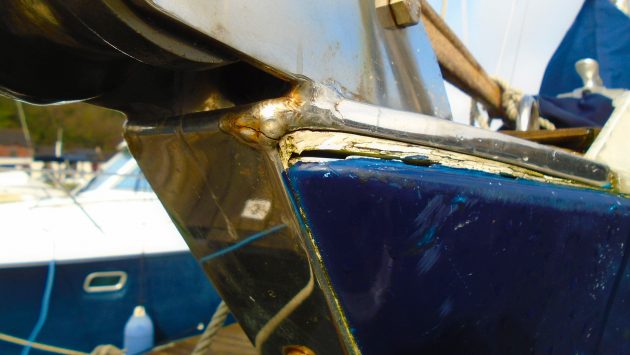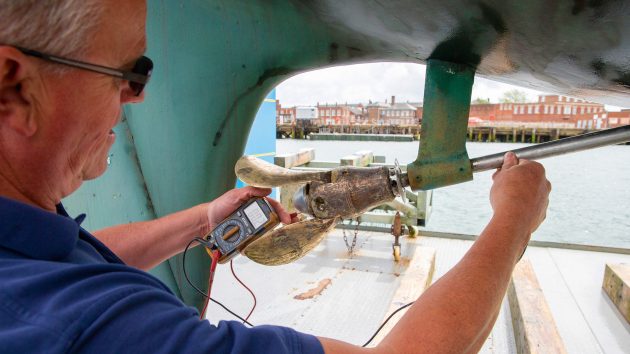This article from yachtingworld.com was written by Will Burton for the UK market, but what is discussed is still relevant to us here in Australia:
Commissioning a yacht survey before buying a boat is essential due diligence, giving the buyer an independent review of the complex craft with numerous systems they are about to buy. But how should you go about it?
‘Subject to survey’ might be the most powerful caveat to a serious offer on a yacht, yet what a good yacht survey entails can be something of a mystery.
The international market for yacht sales is largely unregulated, so all parties are reliant on mostly independent surveyors to help them make an informed decision. Finding a good one can be half the battle.
“The first thing to understand is that, just like a house survey, we can only survey what we can see. There’s no crystal ball,” explains Ben Sutcliffe-Davies, a full member of the Yacht Designers & Surveyors Association (YDSA) with two decades of surveying experience.
“The report is a comprehensive look at everything we can see. If done properly, it requires good access to the boat for the surveyor. Owners are sometimes surprised that we want to see inside every locker – ideally empty – so it can be disruptive as a process and is usually spread over at least two days.
“On completion the buyer (but not the seller) will be given a report of the findings, including recommendations for any further specialist investigation. While the report might then be used to negotiate on an already agreed price, buyers at this point are usually under contract to complete the purchase. Sometimes buyers appoint a surveyor hoping to knock a significant sum off the price they have already offered.
While that might be an outcome, the survey should never be approached as leverage – we are there to be totally objective, not as a negotiating tool for a boat that can’t be afforded at the already agreed price. Surveys can also sometimes deliver a dose of cold reality to both buyer and seller, ruling the transaction out completely.”

Comprehensive assessment
A good marine survey will be broken down into sections on different aspects of the boat:
Hull – The hull, deck and topsides of the boat are generally the initial focus, checking the yacht is structurally sound and looking for moisture in the hull with a hammer and hydrometer. Skin fittings, hoses attached to them, and deck drains will also be carefully checked as they often need replacing. Security of the keel and its condition will also be carefully looked at.
Rudder – Rudders are vulnerable to water ingress, delamination, and failure of the steering bearing.
Engine – Engines and generators can be looked at as part of a survey out of the water but can also sometimes be run up to temperature. Engine mounts, fuel lines, belts, exhaust systems and the stern gland are all serviceable parts which wear over time. Using tools like thermal imaging cameras can help surveyors build a picture of what is going on inside the engine when it is running as well.
Systems – Yachts are also a home, and a survey will consider both domestic systems and those that enable the yacht to sail. Fresh water, heating, gas, navigation technology and lighting will be looked at. A survey does not generally include a gas safety check, and this may be insisted on by an insurer separately.
Rigging – A survey will generally look at the rigging at deck level only, so it may also be necessary to commission a rig check by a professional rigger. It’s often the case that a survey recommends full replacement of a yacht’s fixed rigging earlier than expected by buyer or seller.
Safety equipment – A survey will look at the condition and service dates of the safety equipment on board and make recommendations for replacement. This is sometimes a significant hidden cost.
Survey reports vary a lot in length and the degree of detail included. Pictures may be included in the report, but they are primarily for the record of the surveyor.
How to find a surveyor for your yacht survey
A yacht surveyor does not officially need to be part of any organisation and technically anyone can call themselves a yacht surveyor, but several industry bodies are recognised by marine insurance companies. A surveyor that is a member of the Yacht Brokers Designers and Surveyors Association (YBDSA) or the International Institute of Marine Surveying (IIMS) are good starting points, both recognised by the main UK marine insurance companies.
Finding a suitably qualified surveyor for a yacht located abroad can be more challenging but a surprising number are located in or near popular yachting destinations. While some are happy to travel, these additional expenses can add up.
** Editor’s note – In Australia, checkout the AMSA site for an accredited marine surveyor. **
The legalities
A survey does not form any kind of guarantee, so it is important to understand what the limitations of a survey are. Lucy Rutter of the RYA’s Legal Affairs Department explains that the devil is in the detail: “A purchaser/future owner should read the surveyor’s terms and conditions to ensure that they fully understand the extent of the survey.

“Some members have found issues post-purchase, such as furling gear failing, having expected the survey to report on such items when it was clearly stated in the surveyor’s terms and conditions that the scope of the survey would not involve testing the furling jib.”
If something does become contentious with a survey, Rutter explains, “A surveyor’s duty is confined to exercising reasonable skill and care in reporting reasonably discoverable faults existing at the time of the survey. We advise that any purchaser confirms with the surveyor that they have professional indemnity insurance before appointing them. Any claims against a surveyor should be covered by such a policy. RYA members have access to our Negligent Survey Guidance Note and we can provide them with advice based on the legal principles of a claim.”
When it comes to insurance, Rutter warns that a pre-purchase survey can also help to avoid the nightmare scenario of a yacht that fails a survey under new ownership and cannot be insured.
“Many insurance providers require a condition survey before they are willing to insure. We’d advise any future boat owner to confirm with their preferred insurance broker as to whether their policy requires a survey. They may also stipulate the boat to be subject to regular surveys (for example, every five years).
“We know of some members who purchased without a pre-purchase survey and later had to instruct a surveyor for insurance purposes, only to find the survey identified issues with the boat post-completion. Unfortunately, in such circumstances there is little legal recourse as when buying from a private individual ‘caveat emptor’ (buyer beware) applies, which means it is up to the purchaser to ensure they are aware of the condition of the boat.”
Click here for the original article.


























